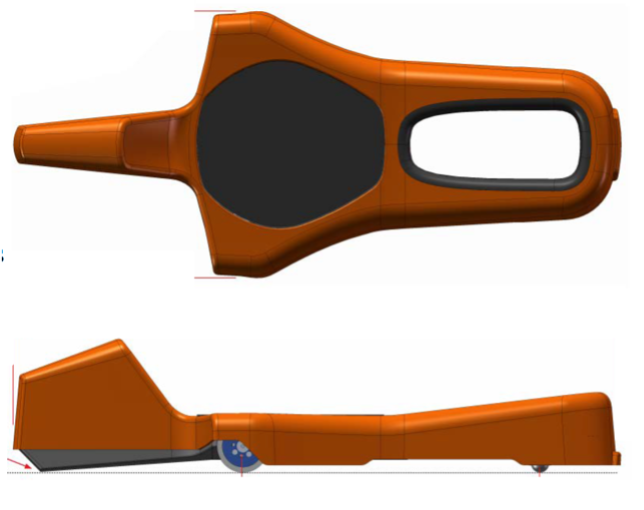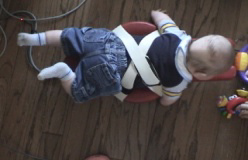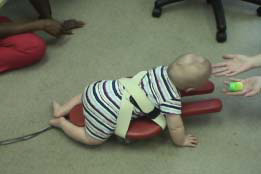Engineering and Physical Science
SIPPC: Self-Initiated Prone Progressive Crawler
Self-generated mobility via locomotion is a key for the cognitive, social and motor development of young infants. Children with disabilities such as cerebral palsy, Down’s syndrome, or Spina-Bifida do not usually explore their environment like typically developing children.
The technology
The Self-Initiated Prone Progressive Crawler (SIPPC) facilitates crawling in infants who are unable to perform the act of locomotion independently. It senses the infant’s intent and provides gentle encouragement to assist the movement using a controller, motors, and input transducers.

Mobility mode: If the SIPPC detects any motion in any direction, it will continue to move in that direction for three seconds, providing motivation for the baby to make the SIPPC move again.
Force (Kinetic) mode: A force plate on the SIPPC that the baby lies on measures shifts in weight, determines which direction the baby wants to move and moves in that direction.
Safety has been addressed on several levels including padded top surface, head support, and infrared proximity detectors to eliminate contact between the device and vertical surfaces. Additionally the motors and controllers are designed to limit propulsion speeds via both software and hardware limit switches. Propulsion distance is also limited following an activation event.


